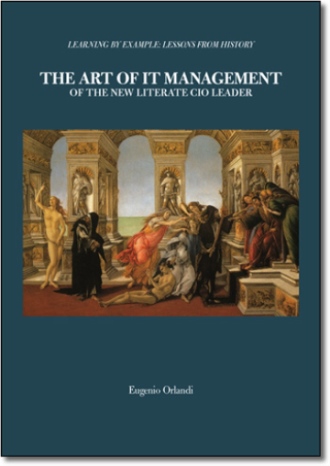The Art of IT Management of the New Literate CIO Leader
by
Book Details
About the Book
'A lesson from chronicles and history that no IT guru, consultant or business school will ever tell you.' The majority of the books on Information Technology (IT) Management deal with mastering techniques. Some stress the importance of change management, ethics, and cultural differences but few assign space to the irrational or emotional side of every organisation: the influence of personal interests, politics, pressures, desires, dreams of stakeholders and competitors. In most, decision making seems a totally rational process, uninfluenced by emotions like fear (of change), uncertainty, doubt, or envy; working conditions are ideal - managers have enough time, budget, and freedom to hire skilled and motivated persons; sponsors and users are either patient and aware of the time necessary to complete and document the project, or they are irremediably impatient, and quickly outsource everything. This book is aimed at highlighting real working conditions. The leitmotiv is current hot topics in IT: Governance and Leadership. A satisfactory answer to these issues requires a coherent narration in the form of a handbook including a general theory (Weltanschauung) of the CIO's role. The CIO's challenges - change, globalisation, outsourcing - are approached with classic general management and specific IT management techniques and models, some specifically developed by the author (The IS Unit Good Health, The Five Actors, The Five Rs, The Four Pillars). Since irony is a necessary trait for survival in today's hyper-competitive, constantly changing world, some surrealistic characters and situations (similar to the Peter's Principle or Murphy's Law) are presented: The Fakir Sect, The Managerial Killing Fields, The Short-Path Principle, The 12/24/36 Months Law. A reading from history and/or literature taken from Western and Eastern cultures completes each chapter, along with a bit of mathematics: probability, chaos and fuzzy set theories. The examples will appear familiar to people living in the USA, Europe, and Asia (China, India, and Japan).
About the Author
Eugenio Orlandi received his engineering degree from the University of Rome La Sapienza in 1979. Since 1980 - after scholarship studies in Japan - he has worked for public utilities covering the position of systems analyst, project manger, deputy CIO, CIO, Central Director, member of the Board of Directors, Chairman of a national User Society of a leading European IT producer. Author of more than 75 articles and papers presented at international conferences in Europe, America, Asia, and Australia, he has published: Principles of Informatics (Bookness, 1988); Risk Engineering (Angeli, 1989); Computer Aided Software Engineering (Angeli, 1991); Medical Data Privacy, in: Basic Informatics for Physicians, Pinciroli, F. (editor) UTET, 1992; Software: classification, computer languages and operational systems, Software Engineering; Quality Control in Software Engineering, in: Total Quality, Vacca, R. (editor), Sperling & Kupfer, 1995; Computernetzwerke, in: Datensicherheit und Datenschutz, Fleissner, P. and Choch, M. (editors), Studien Verlag, 1996; and a book of poetry.


